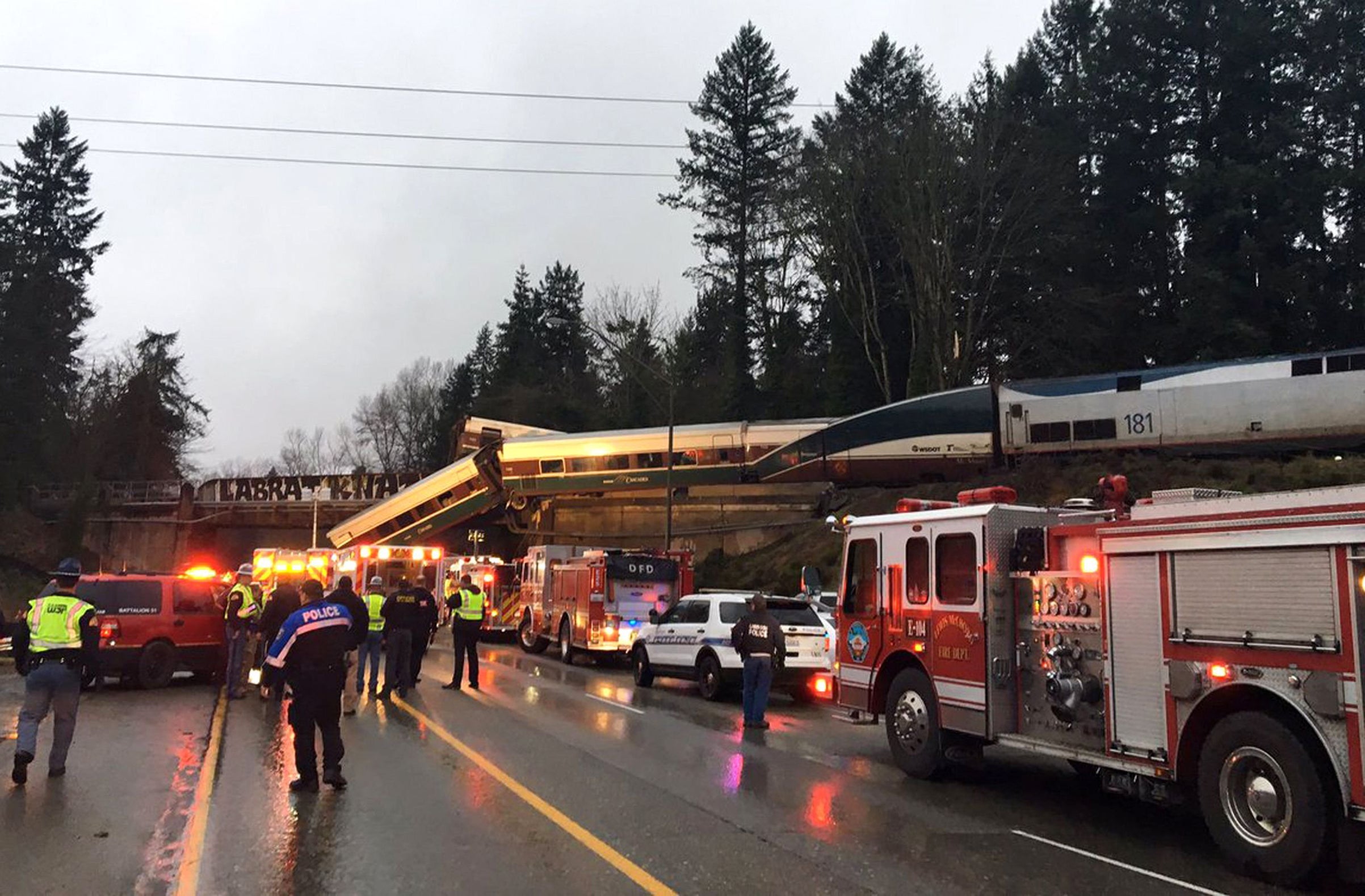
As authorities were still trying to determine the causes — and the exact death toll — of Monday’s Amtrak derailment in Washington state, President Donald Trump immediately waded into a policy debate, teasing a “soon to be submitted infrastructure plan” for “roads, bridges, tunnels, railways (and more).”
“It is all the more reason why we must immediately start fixing the infrastructure of the United States,” Trump said in subsequent remarks on Monday.
But there’s one problem — the Trump Administration already has submitted an infrastructure plan as part of its 2018 budget proposal — and it proposes deep cuts to the nation’s rail systems.
Trump often talked about a $1 trillion infrastructure plan when he was a candidate, and he included a $1 trillion private/public infrastructure investment in the 2018 budget his administration proposed to Congress in May. The plan called for $200 billion in spending in infrastructure, but it also also limited money to build new or expand existing lines and slashed subsidies for rural lines.
Overall, the budget request would slash railroad funding from the President Barack Obama era by almost 13%, according to The Washington Post.
“The President’s infrastructure agenda reflects a “bait-and-switch”: rhetoric that suggests a commitment to rebuilding, but policies that would undermine our ability to do so,” wrote Jacob Leibenluft, a Senior Adviser at Center on Budget and Policy Priorities who worked for the Obama administration and Hillary Clinton’s campaign, in June.
The Post reported in September that the president was backing away from private-public partnership funding, but his administration has yet to reveal his new method of financing infrastructure investments. The White House did not immediately respond to request for comment about the infrastructure plan to which Trump alluded on Monday.
When Trump was touting his infrastructure plan, he seemed to be insinuating that funding had been sacrificed because of the money spent in the Middle East, citing a $7 trillion pricetag that exceeds most estimates. As the wars in Iraq and Afghanistan have expanded, they’ve also exploded the national debt. Budgets, however, did not reflect those true costs and for years were treated as separate spending decisions, usually financed through borrowing.
And the criticism of red ink runs counter to this week’s push by Republicans in Congress to add another $1.5 trillion in borrowing to pay for tax cuts.
This article originally appeared on Time.
